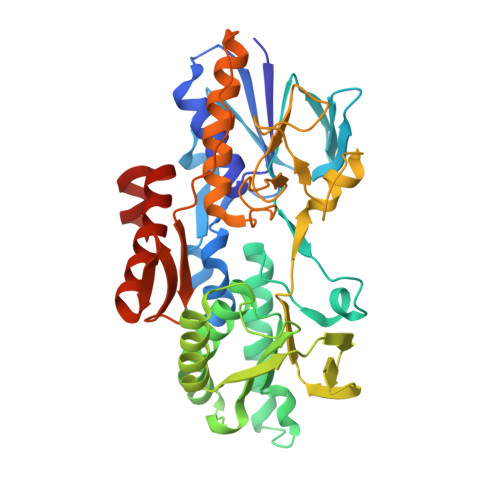The mechanism of catalysis by type-II NADH:quinone oxidoreductases.
Blaza, J.N., Bridges, H.R., Aragao, D., Dunn, E.A., Heikal, A., Cook, G.M., Nakatani, Y., Hirst, J.(2017) Sci Rep 7: 40165-40165
- PubMed: 28067272
- DOI: https://doi.org/10.1038/srep40165
- Primary Citation of Related Structures:
5KMP, 5KMQ, 5KMR, 5KMS - PubMed Abstract:
Type II NADH:quinone oxidoreductase (NDH-2) is central to the respiratory chains of many organisms. It is not present in mammals so may be exploited as an antimicrobial drug target or used as a substitute for dysfunctional respiratory complex I in neuromuscular disorders. NDH-2 is a single-subunit monotopic membrane protein with just a flavin cofactor, yet no consensus exists on its mechanism. Here, we use steady-state and pre-steady-state kinetics combined with mutagenesis and structural studies to determine the mechanism of NDH-2 from Caldalkalibacillus thermarum. We show that the two substrate reactions occur independently, at different sites, and regardless of the occupancy of the partner site. We conclude that the reaction pathway is determined stochastically, by the substrate/product concentrations and dissociation constants, and can follow either a ping-pong or ternary mechanism. This mechanistic versatility provides a unified explanation for all extant data and a new foundation for the development of therapeutic strategies.
- MRC Mitochondrial Biology Unit, Wellcome Trust/MRC Building, Hills Road, Cambridge CB2 0XY, UK.
Organizational Affiliation:


















